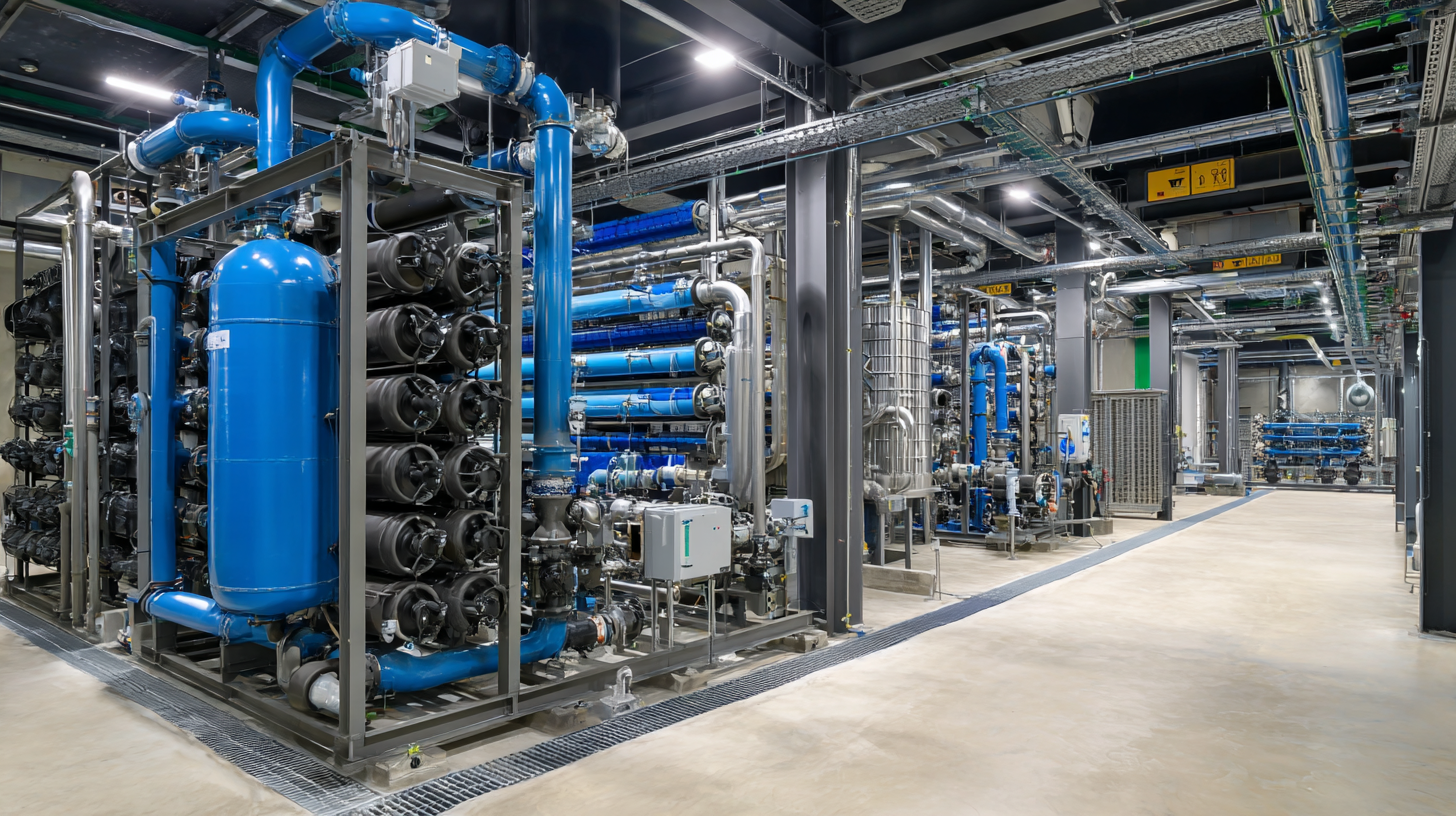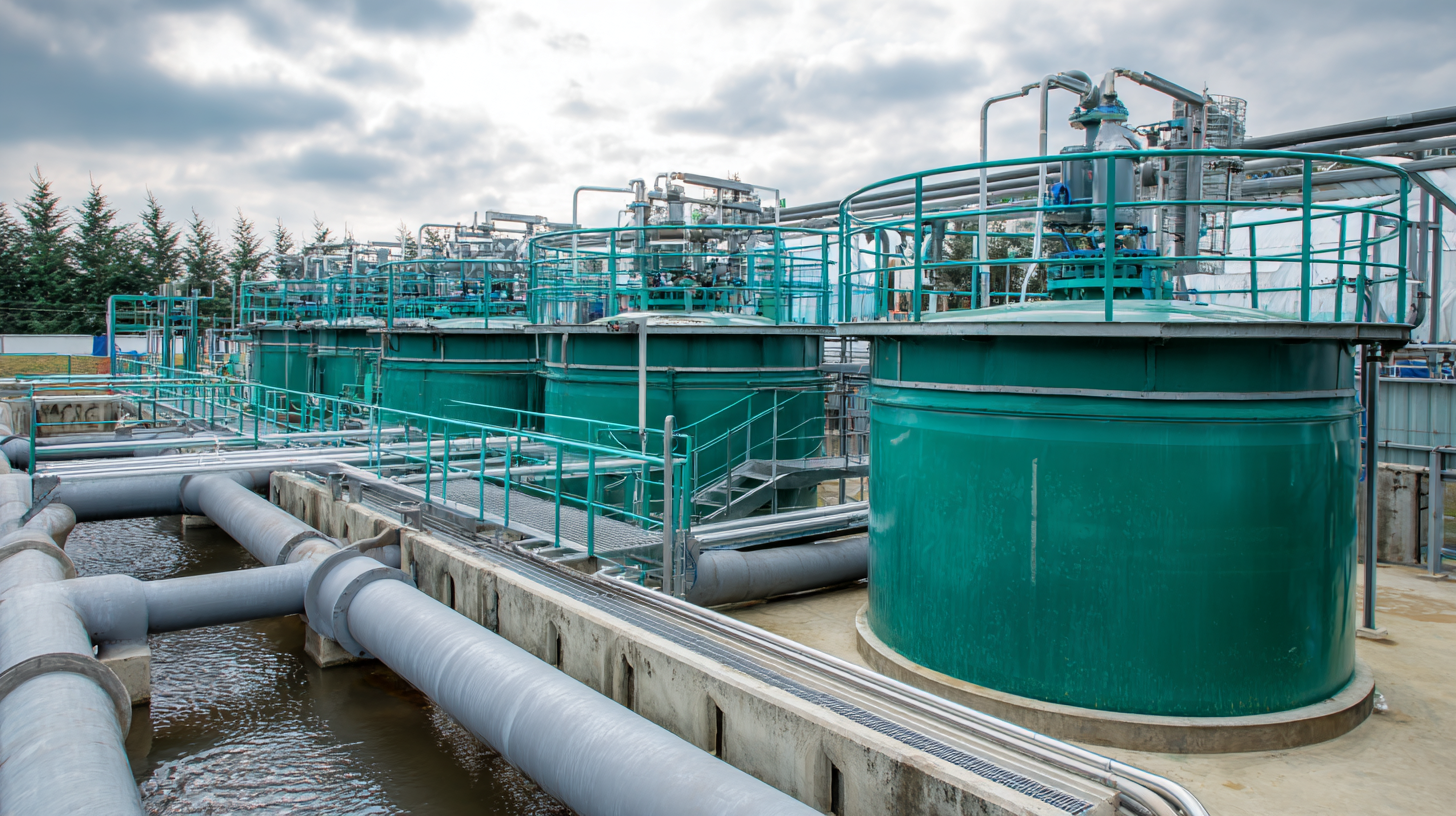8 Best Sewage Treatment Plant Processes to Optimize Waste Management Efficiency
In the quest for sustainable waste management, the optimization of sewage treatment plant processes has become a critical focus for municipalities and industries alike. With growing environmental concerns and stricter regulations, it is essential to adopt innovative and efficient methods for treating wastewater. The right sewage treatment plant process not only helps in reducing pollutants but also aids in recovering valuable resources, such as water and energy, from waste.
This article highlights the eight best sewage treatment plant processes that can be instrumental in enhancing operational efficiency. By examining various approaches, we aim to provide insights into how these processes can effectively address the diverse challenges posed by wastewater management. Whether through advanced biological treatment, innovative filtration techniques, or cutting-edge technology integration, each method offers unique benefits that can significantly improve the overall performance of sewage treatment facilities.
As we delve into these processes, we will explore not only their operational efficacy but also their environmental impact and potential for resource recovery. By understanding and implementing the best sewage treatment plant processes, stakeholders can ensure a more sustainable approach to managing wastewater, ultimately contributing to healthier ecosystems and communities.

Innovative Biological Treatment Methods for Enhanced Sewage Processing Efficiency
Innovative biological treatment methods are revolutionizing sewage processing efficiency. Utilizing advancements in microbial technology, these methods not only enhance organic matter degradation but also improve nutrient removal from wastewater. According to a report by the Water Environment Federation, the implementation of advanced biological processes can increase the removal efficiency of nitrogen and phosphorus up to 90% under optimal conditions, which significantly contributes to reducing the environmental impact of sewage discharge.
One promising approach is the use of integrated fixed-film activated sludge (IFAS) systems, which combine traditional activated sludge processes with fixed-film media. This dual action allows for superior biomass retention and enhanced treatment performance, leading to reduced energy consumption and lower operational costs. In fact, studies indicate that facilities employing IFAS can achieve a 25-30% increase in treatment capacity without the need for significant capital investment in infrastructure. As municipalities seek to meet stringent regulatory requirements and manage growing populations, embracing these innovative biological treatment methods becomes essential for sustainable waste management.
Advanced Membrane Technologies: Revolutionizing Wastewater Filtration and Reuse
 Advanced membrane technologies are making significant strides in
wastewater filtration and reuse, transforming the landscape of
sewage treatment. These technologies, such as microfiltration, ultrafiltration,
and reverse osmosis, offer an efficient and effective way to remove contaminants
and pathogens from wastewater. Reports from the Water Research Foundation
indicate that membrane systems can reduce pollutant levels by
over 90%, making them suitable
for a variety of applications, from agricultural irrigation to potable water supply.
Advanced membrane technologies are making significant strides in
wastewater filtration and reuse, transforming the landscape of
sewage treatment. These technologies, such as microfiltration, ultrafiltration,
and reverse osmosis, offer an efficient and effective way to remove contaminants
and pathogens from wastewater. Reports from the Water Research Foundation
indicate that membrane systems can reduce pollutant levels by
over 90%, making them suitable
for a variety of applications, from agricultural irrigation to potable water supply.
One of the key advantages of using advanced membrane technologies is their
ability to support water reclamation efforts. With global water scarcity on the
rise, the reuse of treated wastewater has become more essential than ever.
According to the United Nations, by 2025, two-thirds of the world's population
may face water-stressed conditions. Membrane filtration systems not only
enhance treatment efficiency but also enable the recovery of valuable resources
such as nutrients and energy from wastewater.
Tips: For facilities considering the implementation of membrane technologies,
ensure regular maintenance and monitoring of the membranes to sustain
optimal performance. Additionally,
exploring hybrid systems that combine membrane technologies with traditional
methods can further enhance overall wastewater treatment efficiency and reliability.
Integrated Resource Recovery Systems: Maximizing Value from Sewage Sludge
Integrated Resource Recovery Systems (IRRS) represent a transformative approach to sewage management, aiming to maximize the value extracted from sewage sludge. Instead of treating sludge as mere waste, IRRS views it as a resource that can provide a variety of benefits, including energy, nutrients, and organic materials.
By implementing advanced processes such as anaerobic digestion, facilities can convert organic matter in sewage into biogas, which can be harnessed for electricity generation or as a renewable heating source. This not only reduces the dependency on fossil fuels but also minimizes greenhouse gas emissions associated with sewage treatment.
Moreover, IRRS encourages the recovery of valuable nutrients from sewage sludge, such as nitrogen and phosphorus, which are essential for agricultural use. By recycling these nutrients back into the soil, IRRS contributes to sustainable farming practices and reduces the need for synthetic fertilizers.
Techniques such as struvite crystallization can effectively extract phosphorus, while nutrient-rich biosolids can be processed and applied as soil amendments. Overall, Integrated Resource Recovery Systems not only enhance the efficiency of waste management but also promote environmental sustainability by closing the loop in the waste cycle and recovering valuable materials for reuse.

Real-time Monitoring Technologies: Driving Data-Driven Decisions in Waste Management
Real-time monitoring technologies are revolutionizing waste management by enabling data-driven decisions that enhance the efficiency of sewage treatment processes. These advanced systems collect and analyze data continuously, allowing operators to gain insights into key performance indicators such as flow rates, chemical concentrations, and energy consumption. By leveraging this information, sewage treatment plants can quickly identify abnormalities and optimize operations, ultimately leading to reduced costs and improved environmental outcomes.
Moreover, the integration of Internet of Things (IoT) devices in sewage treatment processes facilitates proactive maintenance and operational adjustments. For instance, sensors can detect potential blockages or equipment failures before they escalate into significant issues, minimizing downtime and enhancing reliability. The capability to monitor treatment variables in real-time supports a more responsive approach, ensuring that treatment methods are continually adjusted to meet varying demands and regulatory standards. With these innovations, waste management can evolve into a more sustainable and effective endeavor, fostering improved resource recovery and environmental protection.
8 Best Sewage Treatment Plant Processes to Optimize Waste Management Efficiency
| Process Name | Efficiency Rate (%) | Treatment Time (hours) | Energy Consumption (kWh) | Real-Time Monitoring Technology |
|---|---|---|---|---|
| Activated Sludge Process | 85 | 6 | 0.5 | SCADA Systems |
| Sequencing Batch Reactor | 90 | 8 | 0.6 | IoT Sensors |
| Membrane Bioreactor | 92 | 5 | 0.7 | Real-Time Data Analytics |
| Trickling Filter | 75 | 24 | 0.4 | Online Monitoring Tools |
| Dissolved Air Flotation | 88 | 4 | 0.5 | IoT Monitoring Solutions |
| Constructed Wetlands | 80 | 18 | 0.3 | Data Logger Systems |
| Anaerobic Digestion | 95 | 48 | 0.8 | Biogas Monitoring Systems |
| Phycoremediation | 70 | 30 | 0.2 | Environmental Sensors |
Circular Economy Approaches in Sewage Treatment: Strategies for Sustainable Waste Management Solutions
Circular economy approaches are revolutionizing sewage treatment and waste management, emphasizing resource recovery and sustainable practices. According to the United Nations, wastewater represents a significant untapped resource; recycling these materials can contribute to a circular economy. By 2030, it is estimated that if we effectively utilize this potential, we could decrease global water scarcity for 700 million people. Embracing innovative technologies like anaerobic digestion, facilities can not only treat sewage but also generate biogas, which can be converted into energy. This process has been shown to reduce greenhouse gas emissions by up to 60% compared to traditional methods, making it a win-win for both the environment and energy sustainability.
Incorporating circular economy principles also means rethinking the role of nutrients in sewage. A report from the World Resources Institute indicates that treating sewage to extract nutrients such as nitrogen and phosphorus not only minimizes environmental impacts but also creates a valuable byproduct for agriculture. Transitioning to a circular model can cut the costs of nutrient inputs by up to 40% for farmers, thus fostering a sustainable food system. As sewage treatment plants evolve, utilizing advanced technologies to capture resources will be crucial in promoting an effective, sustainable waste management ecosystem.
8 Best Sewage Treatment Plant Processes to Optimize Waste Management Efficiency
This chart displays the efficiency ratings of various sewage treatment plant processes on a scale of 1 to 10. The data illustrates how different methods rank in terms of effectiveness for optimizing waste management in a sustainable manner.
Related Posts
-

Exploring Innovations in Sewer Treatment Plants at China Import and Export Fair 2025
-

How to Optimize Sewage Water Treatment for Environmental Sustainability
-

Transforming Industrial Waste Water Treatment Solutions at the 138th Canton Fair 2025 for a Sustainable Future
-

Exploring Innovations in Waste Water Treatment Systems at China's 138th Canton Fair 2025
-

What is the Role of Waste Water Treatment Plants in Sustainable Water Management?
-

Revolutionizing Our Future: The Innovative Advances in Wastewater Treatment Systems


